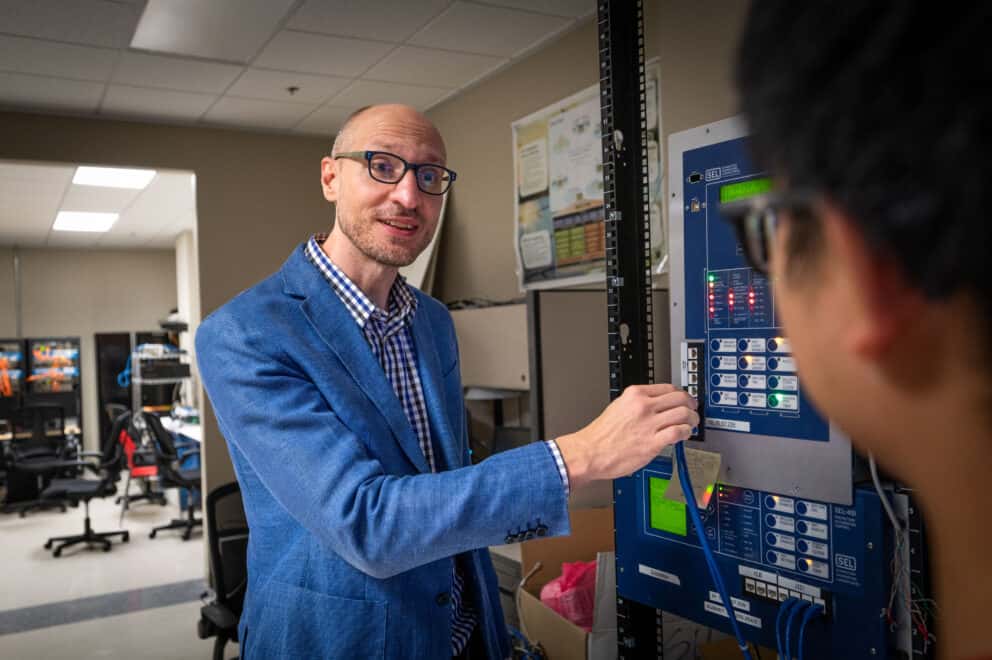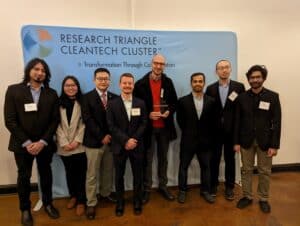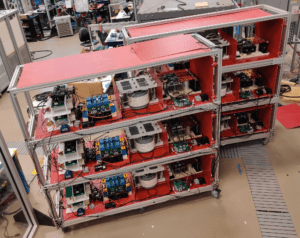
The FREEDM Systems Center at North Carolina State University is building the next generation of electric vehicle fast charger. With funding from the US Department of Energy and in partnership with ABB and the New York Power Authority, a FREEDM research team led by Srdjan Lukic, PhD, is building a charging station with four ports rated at 350 kilowatts each and a total station power rating of 1 megawatt.
This Extreme Fast Charger (XFC) project was selected by a panel of judges for the 2021 Cleantech Research Innovation Award from the Research Triangle Cleantech Cluster. The award recognizes an individual or group pursuing a research-based solution to a pressing cleantech challenge, working toward commercialization of a research-based cleantech innovation, or spearheading a new collaboration between research and industry. The FREEDM XFC project does all these things!

“Larger EVs like transit buses or refuse trucks require high power charging to increase their utilization,” says Dr. Lukic. “But an extreme fast charging solution must also address utility demand charges, optimize efficiency and minimize physical size.” These constraints and the very high power requirements point to a direct connection to the distribution grid at 13.2 kV. To make this connection, researchers selected Silicon Carbide devices, a newer breed of wide bandgap semiconductors that can operate at higher voltages, higher temperatures, higher currents, and higher switching frequencies than traditional silicon devices. All this means that our fast charger is more efficient and compact than any other charger at this power rating.

Extreme fast charging improves the economics of large electric trucks by increasing uptime. The FREEDM design also uses a local DC distribution system to incorporate battery energy storage and renewable energy sources like solar or small scale wind. Connecting at the medium voltage distribution grid also eliminates the step down transformer and associated bottleneck in power delivery for future electric fleet expansion. Higher efficiency reduces wasted energy compared to other solutions. And of course, more electric trucks and buses directly leads to improved air quality and improved lung health for nearby residents. The prototype charger will be deployed in New York State in 2022.
For more information, please review this technical presentation or contact Ken Dulaney, FREEDM’s Director of Industry and Innovation at kadulane@ncsu.edu.
